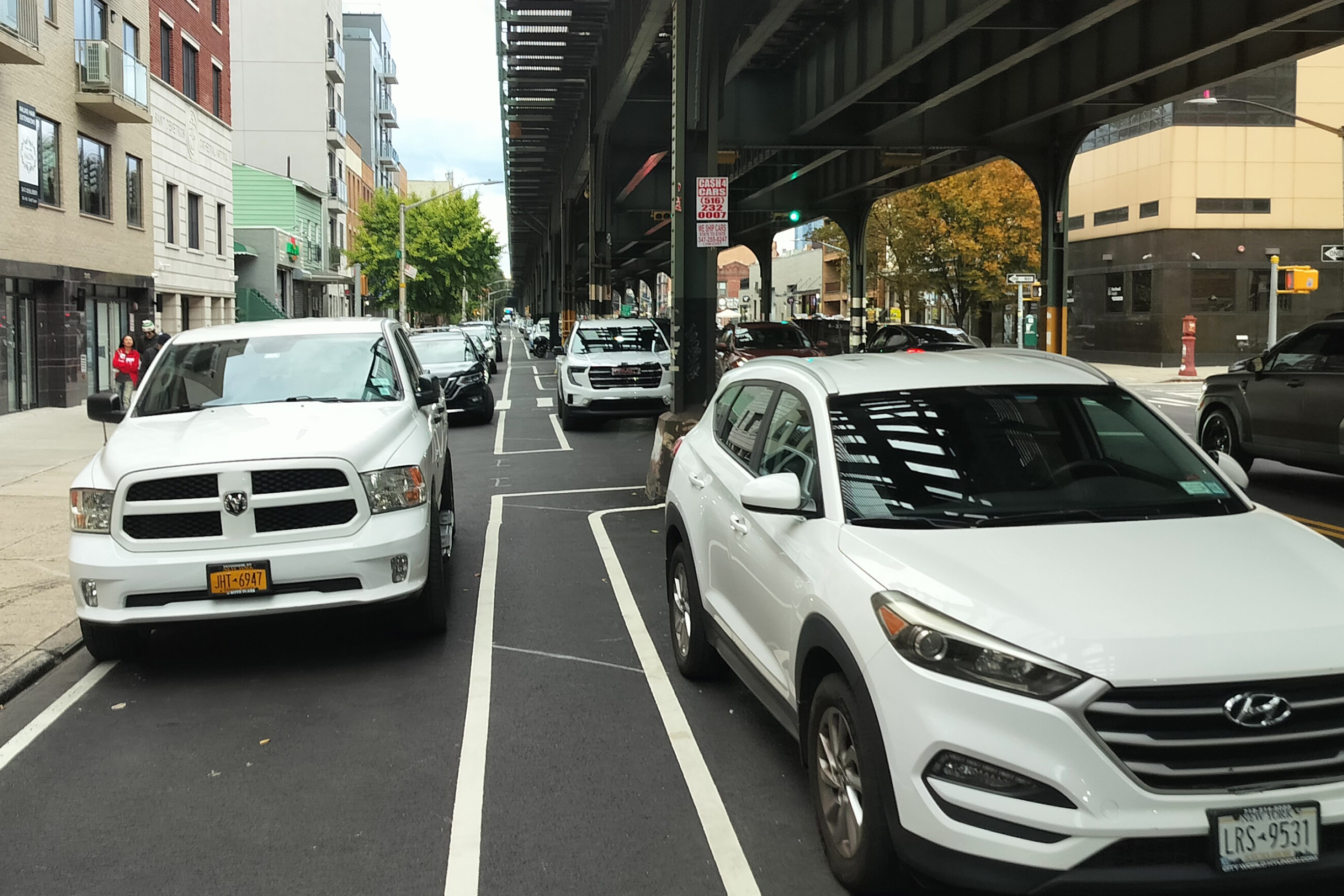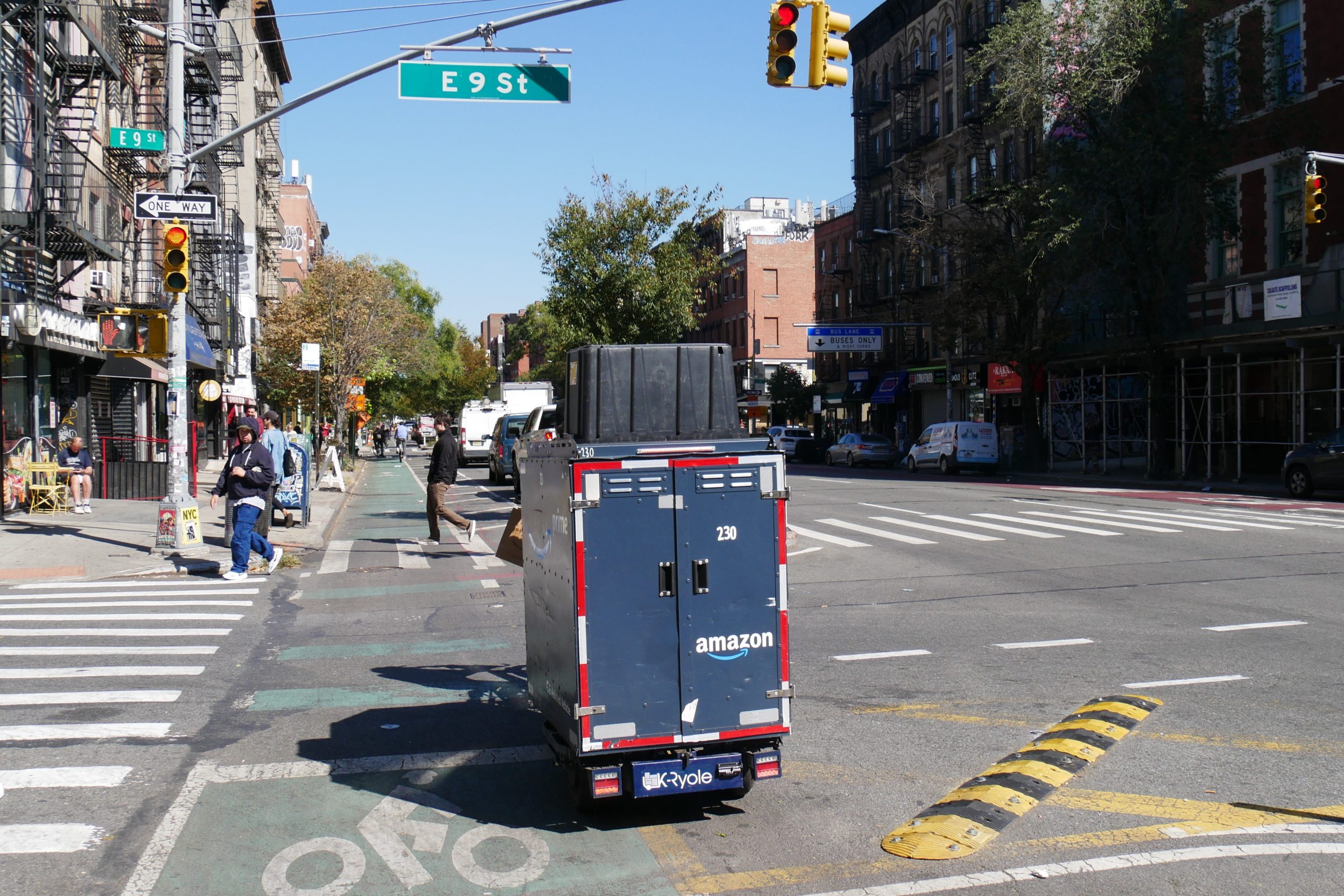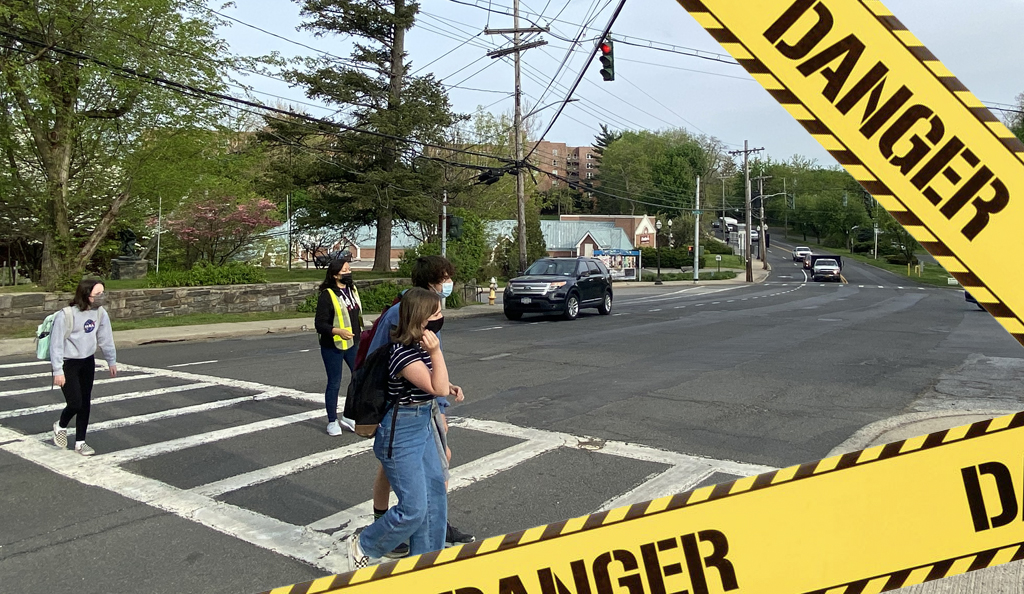She's not only #CongestionKathy, she's now #FareHikeHochul.
Gov. Hochul's 11th-hour move to "pause" congestion pricing means that riders will have to pay in the form of fare hikes and service cuts, MTA CEO Janno Lieber made plain on Monday.
Without $1 billion annually from congestion pricing to backstop loans for its current $55-billion capital construction program, the MTA will need to pay back its capital borrowing from its operating budget much earlier than it planned to, Lieber said at a press conference on Monday at the authority's 2 Broadway headquarters.
The capital budget funds subway repairs, maintenance and modernization while the operating budget covers daily operation and routine maintenance of buses and trains — and is primarily paid for by rider fares, meaning that the loss of congestion pricing revenue will necessitate painful fare increases and service reductions, and could reduce system reliability.
"We can't make up money we don't have," Lieber told reporters. "If we have to activate our borrowing earlier, it adds to the operating budget. The debt service goes on the operating budget."
About $7 billion of the current capital plan was slated to be funded with borrowing that wasn't backed by congestion pricing.
Axing the congestion toll means that the agency will have to use that money earlier than originally intended — digging into the operating budget, and rider wallets, sooner.
"It's definitely a stressor on the operating budget earlier than they thought it was going to be," said Citizens Budget Commission President Andrew Rein.
"They were trying to use their own bonds later. The later you use it, other bonds are being repaid, so from a long-run perspective, if you start now versus two or three years from now, it's an acceleration, and it hits your operating budget sooner."
Rein pointed out that the MTA's operating budget was already under a number of stresses. Hochul's cancellation of congestion pricing effectively spared drivers and shifted costs directly onto riders, he said.
"This is definitely a stress that's unnecessary," Rein said. "It is a stress that has an upward pressure on fares, and that's really incredibly unfortunate, because congestion pricing is in part about having drivers pay their share."
The MTA has regularly enacted fare and toll increases since its late 2000s budget crisis forced officials to make drastic and unpopular service cuts. The cost of a bus or subway ride hit $2.90 last year, a record high.
State Comptroller Tom DiNapoli, who has not commented on Hochul's abandonment of the congestion tolls, has highlighted the problem with the MTA's use of operating funds to repay debt, most recently last month in reference to the possibility of the agency needing to borrow money to fund its next capital plan, which starts next year.
"If the MTA resorts to issuing a disproportionate amount of debt to make up for funding gaps as it did in the 2000s, it may once again experience operating
budget stress that could hurt service or necessitate additional fare, toll or tax increases," DiNapoli's office wrote in its annual report on the MTA's debt in May.
As such, Hochul's decision to shelve a toll on disproportionately wealthy drivers means higher fares and worse service for disproportionately working class subway and bus riders — as well as higher tolls for drivers who use MTA bridges and tunnels.
Congestion pricing's delay will likely make the MTA's loans more expensive to pay off, raising debt costs even further, watchdogs told Streetsblog.
Two firms have already said Hochul's decision could damage the MTA's bond ratings, which would raise the agency's borrowing costs — and hit riders directly in a very sensitive area (their wallets).
On Monday, Bloomberg reported that S&P Global Ratings said that killing off congestion pricing "could potentially constrain the MTA's transportation revenue bonds rating." Ratings agency Moody's also said that the MTA's credit rating could dip.
"It's going to be a double-whammy," Reinvent Albany Executive Director John Kaehny told Streetsblog. "The MTA is going to have to borrow more than they thought they would — and that borrowing is going to be more expensive than they thought, because they're getting downgraded."
A downgrade, Kaehny said, "means that you have to pay a higher interest rate to get people to buy your bonds. And that higher interest rate, that borrowing cost, is passed on to riders.
"It's all set up for the riders to just get whacked," he added. "The problem for the MTA is that they need to repair stuff. It's can't be just, 'Let's ignore things longer.' There's a direct relationship between delays and things like how new subway cars and signal systems are. Riders either pay for it with time or money, and probably will end up paying with both."
The MTA has announced that it must slash by $15 billion the 2020-2024 Capital Plan for public transit.
— Ritchie Torres (@RitchieTorres) June 10, 2024
Who depends most on public transit? The lowest-income people of color. The essential workers who put their lives at risk during COVID so that the rest of the city and…
Lieber couldn't say on Monday exactly how much more the MTA will have to pay in annual debt service, promising to get back to reporters with an exact number when asked if the additional debt cost was $300 million per year.
Just one year ago, Hochul and the state legislature put the MTA on firm financial footing and helping the agency avoid apocalyptic service cuts down the road, which makes her congestion pricing decision even more baffling to rider advocates.
"The real possibility of service cuts would undo the good that the governor and legislature did when they made the move to fund the MTA's operations for five years," said Lisa Daglian, the executive director of the Permanent Citizens Advisory Committee to the MTA. "We can't go backwards when we've come so far to get things on track."
(Update, 3:15 p.m.: After publication, DiNapoli, in his best comptroller-ese, confirmed to Streetsblog that Hochul left the MTA in the lurch with her sudden rejection of congestion pricing.
"As I've said many times, increased reliance on debt puts added pressure on the MTA's ability to pay for day to day operations and can impact service," DiNapoli said in a statement.
"The MTA's options are limited, however, as it works with its funding partners to replace the congestion pricing revenue it expected. Increasing reliance on the MTA’s existing debt structures could also add pressure to its credit ratings.")






